|
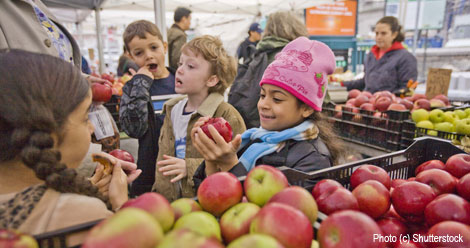
Place-Based Education
By Wendy Priesnitz
One of the defining movements of the early 21st century involves a re-focusing on our local communities. In terms of food, the word used is “locavore.” A locavore tries to eat food that is locally produced, which is often defined as being grown either in one’s own garden or purchased from a farmer operating within one hundred miles of its point of purchase or consumption. The benefits include knowing the origin of one’s food, that it’s grown without any or excessive amounts of chemicals, and is super fresh; environmental benefits such as avoiding the pollution involved with transporting food long distances; and support for local economies. Locavorism is part of a larger trend toward shopping locally, from small, neighborhood businesses rather than large, multinational chains – indie booksellers versus Amazon, the corner coffee roaster versus Starbucks, and so on.
There is also a movement in education that focuses locally. “Place-based education” (sometimes called experiential education or community-based education) is a philosophy that was developed by Massachusetts-based nonprofit The Orion Society in the 1990s. But it’s a term that could also be used to describe how life learners learn. In fact, life learning could be seen as the ultimate in place-based education, which is still the exception rather than the rule in school classrooms.
Through place-based education, students use their local communities as resources for learning by doing. Young people and adults work together, often with local agencies, to solve community problems and develop what is known as a “sense of place.” Many philosophers believe that knowledge of the history, culture, and ecology of one’s immediate surroundings is a stepping stone to understanding broader international issues.
Gregory A. Smith – associate professor in the Graduate School of Education, Lewis & Clark College, Portland, Oregon – notes in a 2002 article in the Phi Delta Kappan magazine that one of the primary strengths of place-based education is that, through its adaptation to the unique characteristics of particular places, it can “help overcome the disjuncture between school and children’s lives that is often a characteristic of school.” He describes it as putting learners in charge of their own learning agendas, with adults as “experienced guides, co-learners, and brokers of community resources and learning possibilities.” Smith also points out that place-based education allows students to “become the creators of knowledge rather than the consumers of knowledge created by others,” in much the same way that graduate schools do.
Although place-based education theory, along with Smith’s commentary, refers to school environments, it all sounds very much like life learning to me!
Place-based education is usually hands-on, project-based, and always related to something in the real world. It involves kids in solving real-world problems, rather than hanging out in one location all day with a group of others that they have not, themselves, chosen. And that’s perfectly suited to life learners, who populate their communities during the day when others are in school. If they’re old enough, in many communities they can volunteer at local institutions such as libraries, hospitals, or nursing homes. Or they can assist entrepreneurs and researchers in their real-life work. Or they can create their own projects, often with an environmental or social aspect – helping monitor the health of a local body of water, cleaning up a park and figuring out how to keep it that way, documenting local flora and fauna as citizen scientists, or exploring local history by interviewing local residents, for instance. One well-known place-based project is the Appalachian Foxfire movement of the 1970s, where young people documented their parents’ and grandparents’ life experiences working in the coal mines and living a hardscrabble life on small, rural properties.
Because such projects connect kids to the economic, civic, and social lives of their communities, they can lead to entrepreneurship opportunities and internships/apprenticeships with local businesses as they begin to pursue career ideas.
One of the criticisms of home-based education, including life learning/unschooling, is that families whose kids aren’t in school have no experience with community participation, resulting in their kids becoming self-centered and unable to participate in a democracy. I have always argued that the opposite is true; life learners, via their place-based education, have plenty of opportunities to become aware of their status and responsibilities as residents of their neighborhoods and communities. And that leads to a stronger commitment to recognize and solve problems as they arise. Click here to read more articles from this magazine about life learners and community engagement.
Wendy Priesnitz is Life Learning Magazine's founder and editor, and has been an advocate of self-directed education for over 40 years. She is also a journalist, a former broadcaster, the author of 13 books, and a changemaker by nature. Her two adult daughters learned without schooling in the 1970s and '80s. You can learn more about Wendy and read some of her writing on her personal website.
Copyright © Life Media
Privacy Policy
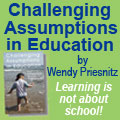 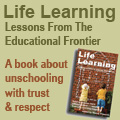 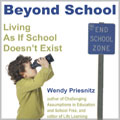
 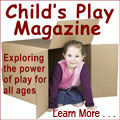 
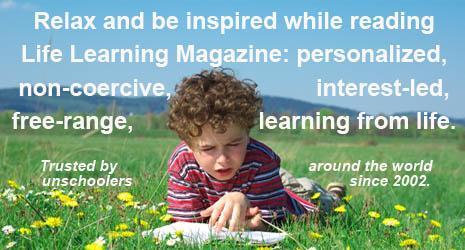
|

